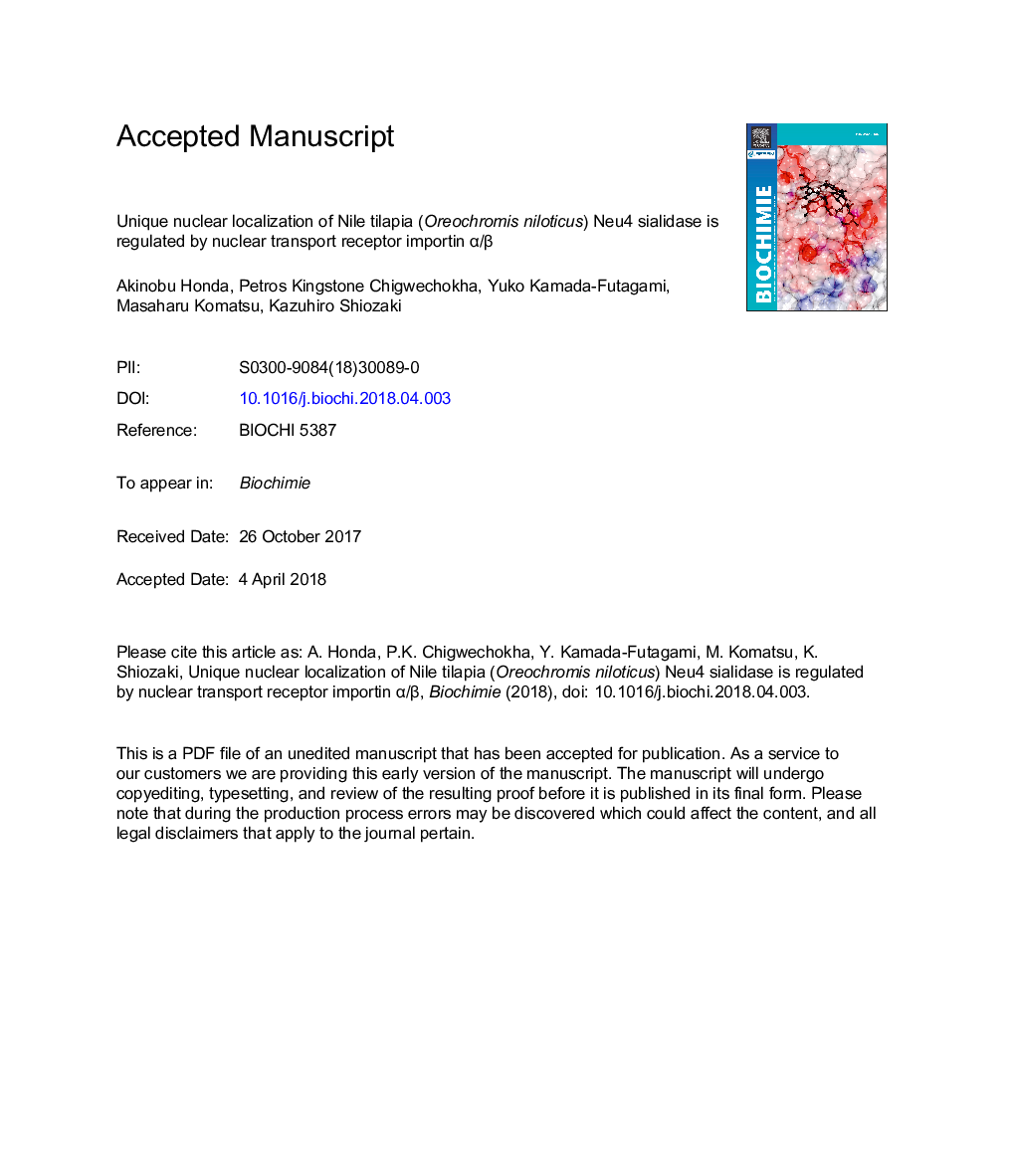| Article ID | Journal | Published Year | Pages | File Type |
|---|---|---|---|---|
| 8304169 | Biochimie | 2018 | 54 Pages |
Abstract
Sialidase catalyzes the removal of sialic acids from glycoconjugates. Different from Neu1 and Neu3 sialidases, Neu4 enzymatic properties such as substrate specificity and subcellular localization are not well-conserved among vertebrates. In fish only zebrafish and medaka neu4 genes have been cloned and their polypeptides have been characterized so far. Thus, characterization of Neu4 from other fish species is necessary to evaluate Neu4 physiological functions. Here, Nile tilapia was chosen for the characterization of Neu4 polypeptide considering that it is one of the major cultured fish all over the world and that its genomic sequences are now available. Coding DNA sequence of tilapia Neu4 was identified as 1,497 bp and its recombinant protein showed broad substrate specificity and optimal sialidase enzyme activity pH at 4.0. Neu4 activity was sustained even in neutral and alkali pH. Interestingly, immunofluorescence analysis revealed that major subcellular localization of tilapia Neu4 was nuclear, quite distinct from zebrafish (ER) and medaka Neu4 (lysosome). Bioinformatic analysis showed the existence of putative nuclear localization signal (NLS) in tilapia Neu4. In general, it is known that importin families bind to several proteins via NLS and transfer them into nucleus. Therefore, to determine the involvement of putative NLS in Neu4 nuclear localization, Neu4 mutant deleting NLS was constructed and expressed in cultured cells. As a result, NLS deletion significantly diminished the nuclear localization. Furthermore, treatment of importazole, interrupter of binding importin β and RanGTP, significantly suppressed Neu4 nuclear localization. In summary, tilapia Neu4 is a unique sialidase localized at nucleus and its transport system into nucleus is regulated by importin.
Keywords
Related Topics
Life Sciences
Biochemistry, Genetics and Molecular Biology
Biochemistry
Authors
Akinobu Honda, Petros Kingstone Chigwechokha, Yuko Kamada-Futagami, Masaharu Komatsu, Kazuhiro Shiozaki,
